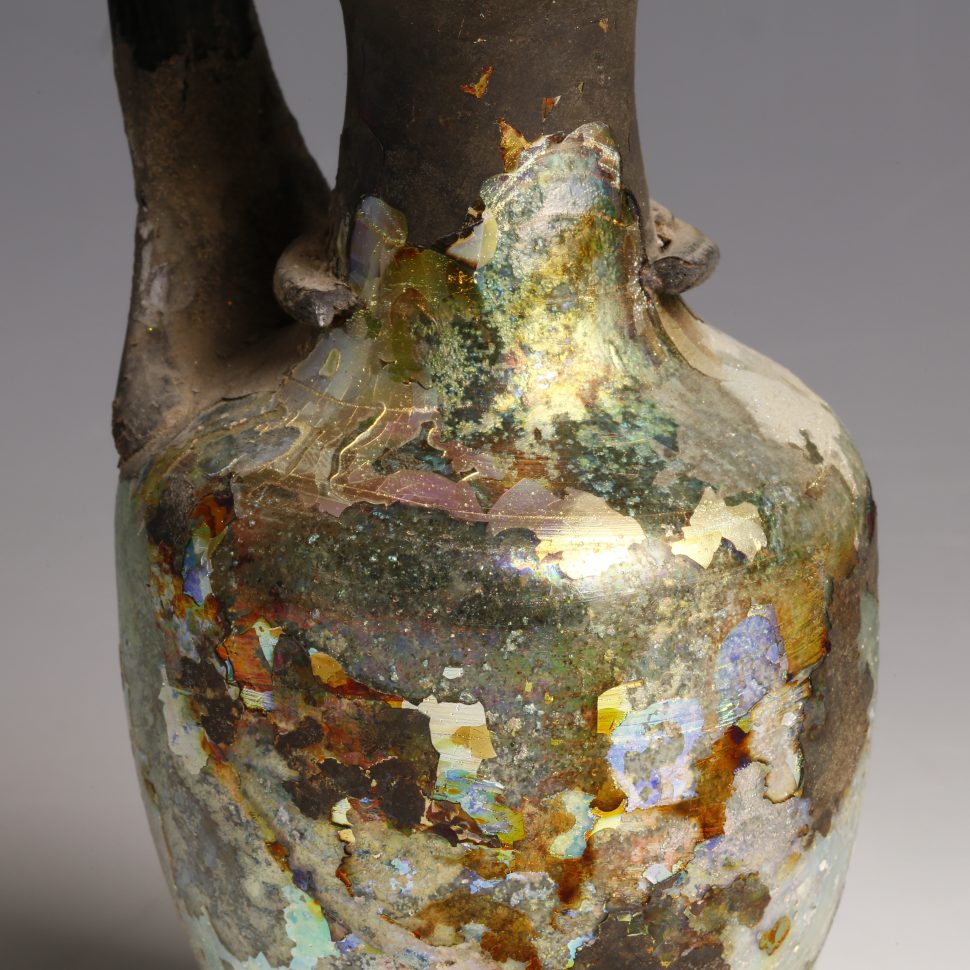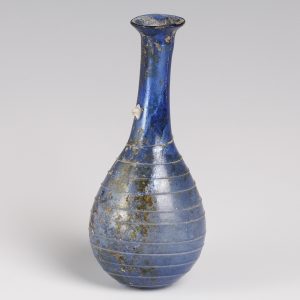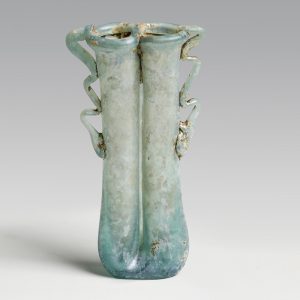Collecting Guide: Ancient Roman Glass
According to the ancient Roman historian Pliny the Elder (23-79 AD), Phoenician merchants moored on the river Belus discovered glass accidentally in Syria around 5,000 BC. However the first glass objects, mainly beads, date back to around 3,500 BC in Mesopotamia. Phoenician merchants and sailors later spread the glass making techniques throughout the Mediterranean.

Glassblowing Technique and Iridescence on Roman Glass
The 1st century AD marked a revolution in glass production technology with the introduction of glass blowing, invented by Syrian craftsmen from Sidon and Babylon between 27 BC and 14 AD. The technique consisted of blowing air into molten glass with a blowpipe. Blown glass resulted thinnier and easier to be modelled. The iridescence on Roman glass was unintentional, a result of chemical processes after the vessel was buried. Originally, much of Roman glass vessels were modelled in bluish-green translucent colour. However other metal oxides were added to the glass to give it different bright colours.
Unguentarium
The most common form of Roman glass vessel was the unguentarium. Unguentaria were extremely popular throughout the Roman Empire, since they contained perfume and oil, considered precious at the time and often used both in private life and public ceremonies. Samples are found frequently at Greek Hellenistic and Roman sites, especially in cemeteries. This is because the ancients believed that the beauty routines, in which both sexes partook and for which such beautiful vessels were required, would continue into the afterlife.


Balsamarium
Used for storing perfumed oils and other expensive cosmetic liquids and powders, ‘balsamaria’ were some of the most common items of blown glass in ancient Rome. They were made in a variety of materials, although glass is the most common variety found. Similarly to unguentaria they were commonly found at grave sites, buried with the deceased. Evidence found from these samples suggests that not only perfumes were held in them but oils and wine, acting as a last toast to the deceased.
Filed under: Buying & Collecting Tags: , Iridescent Glass, Roman Glass
Comments: Comments Off on Collecting Guide: Ancient Roman Glass